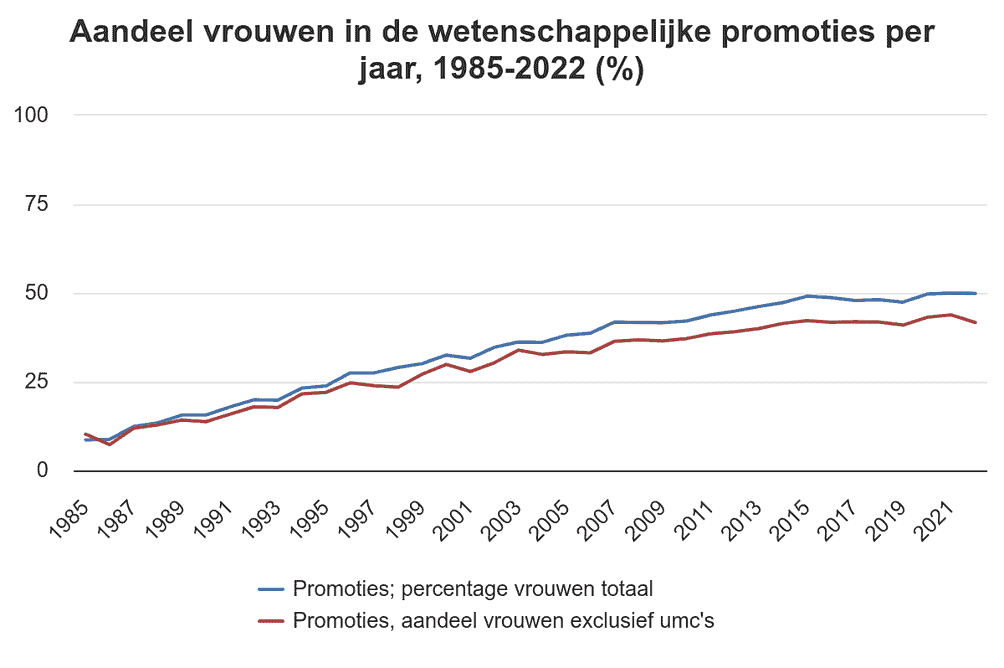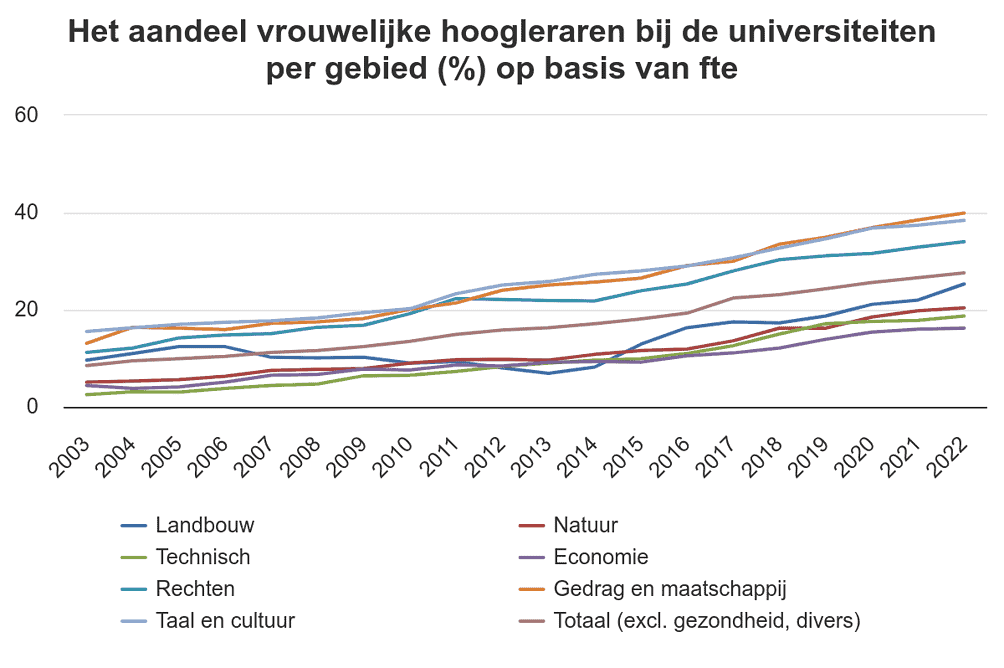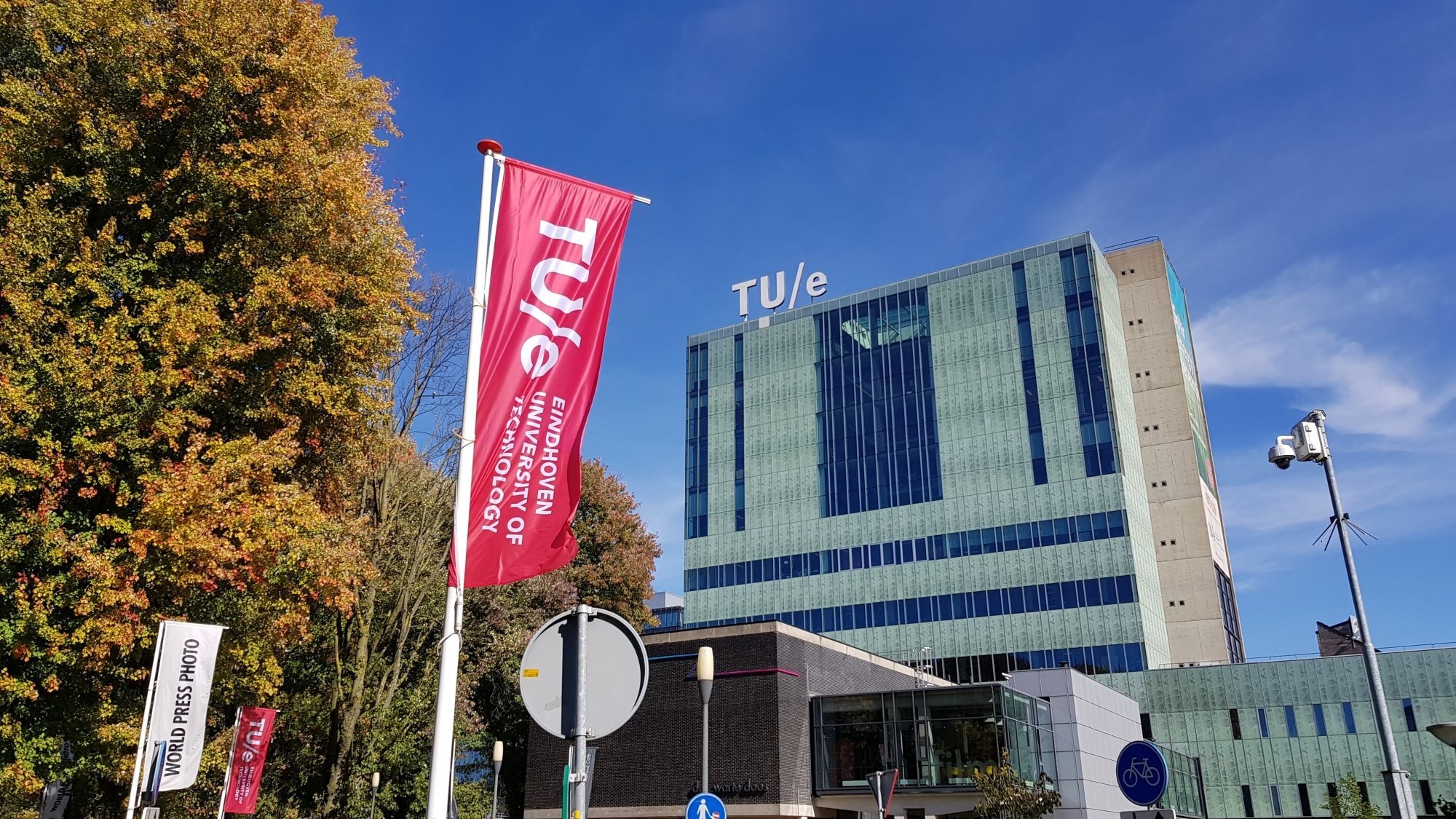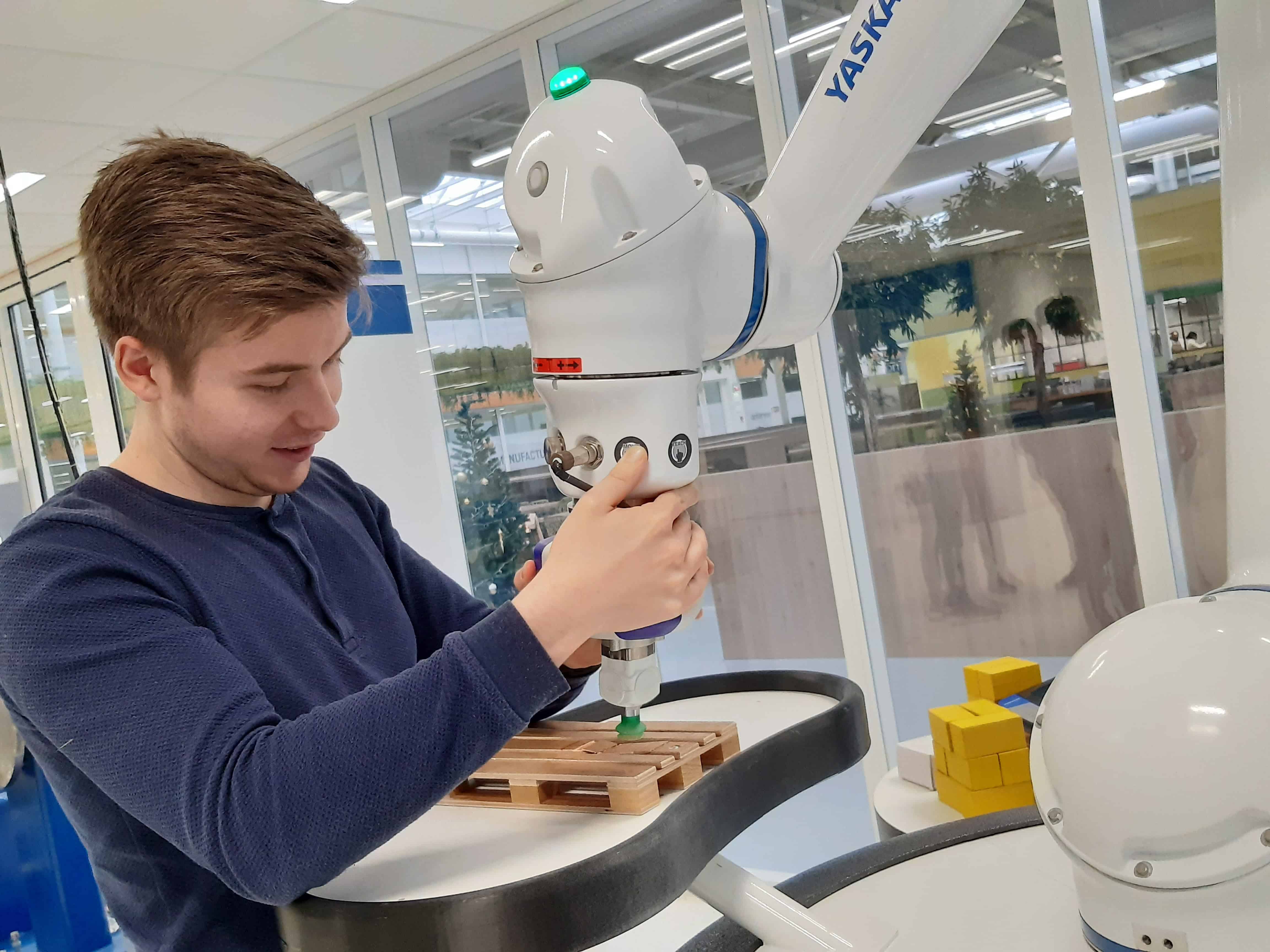
Today, Feb. 11, is International Women and Girls in Science Day. Attention to this theme is much needed because women are severely underrepresented in scientific positions. Even worse, the higher the job level, the more skewed the ratio of women to men. With unchanged policies, it will take many decades for this to change.
Today, 45 percent of doctoral students are women, while only 28 percent of Dutch professors and 34 percent of associate professors (UHDs) are women (2022). Among university lecturers (UDs), the percentage of women is 46 percent.

The trend around PhDs is clear: from 8.8 percent women in 1985 to almost 50 percent in 2022. In the field of science, we see significant differences. The most robust increases are seen in the Technical Sciences (from 2.5 percent to 28.4 percent), the Natural Sciences (from 6 percent to 32.5 percent), and the Agricultural Sciences (from 8 percent to 50.6 percent). In the Medical Sciences, the number of women with doctorates in 2006 was already equal to that of men in 2006, and in 2022, the proportion of women is 62.6 percent.
By discipline, the differences are still large:

TU Delft
Especially in the technical sectors, there is a significant shortage of women. This already starts with the students. For this reason, TU Delft has recently decided on a preferential intake policy for its Aerospace Engineering bachelor’s program. This should lead to an increase of female students up to 30 percent for the 2024/2025 academic year. The move reflects an increasing focus on inclusivity in engineering studies, with the proportion of women now at 20 percent. With nearly 3,000 applications for 440 spots, a significant portion will now be reserved for female students. This ambitious action by TU Delft is a pilot project in line with international standards for gender diversity in top positions and the need for a more inclusive learning environment.
TU Delft’s decision to introduce a preferential policy is in response to the stagnation in the number of female students in engineering. Director of Education Joris Melkert emphasizes that the desired result has not been achieved despite previous efforts, such as promoting role models and adjusting communication. The goal now is to increase the female intake immediately through a concrete intervention.
This new directive is not unfounded. Research shows that diversity is essential for innovation and productivity within technical sectors. Women currently make up only around a third of the high-tech labor market in the EU, indicating a significant gender gap. TU Delft’s preferential policy can thus be seen as a step towards a more balanced distribution of talent within the engineering sector.

International examples set the tone
TU Delft is the first Dutch faculty to introduce such a policy for students, but internationally this is not unknown territory. Vienna University of Technology, for example, has already taken specific measures to increase the proportion of women in academic positions, increasing female staff. TU Eindhoven also made several attempts to increase the proportion of female employees. The university was initially rebuffed for this, but it has since been molded into a new program. Such initiatives show that strategic measures can successfully achieve more gender diversity.

In EU regions, we see large differences in the representation of women in high-tech jobs. Some regions, such as Hungary and Italy, have significant percentages of women in high-tech sectors, while others, such as the Greek region of Thessalia, lag behind with only 8.3 percent female workers. These disparities highlight the importance of targeted actions to promote gender diversity in technical occupations.
The impact of gender equality on innovation
Gender equality in engineering is not only a matter of justice; it also has economic and innovative benefits. Research from Eindhoven University of Technology shows that team diversity leads to more creativity and faster innovation. Therefore, hiring more women in scientific positions is an ethical issue and a strategic move for a competitive and future-proof tech sector.
The tech sector recognizes the importance of diversity, but there is still much work to be done in practice. According to Techleap research, most tech employees consider diversity important but see little concrete change within organizations. This highlights the need for active and tangible measures, such as those taken by TU Delft.
Diversity in Dutch academia
In the Netherlands, universities are committed to a more diverse academic community. For example, targets for female professors have been set, and action plans are being implemented to promote diversity and inclusion. Despite these efforts, the percentage of female professors lags, with technical universities, including Delft, at the bottom of the list.

TU Delft’s preferential policy can help increase the number of women in science and thus, in the long run, the number of female professors. This is essential because, as research by the National Network of Women Professors shows, there are plenty of talented women, but advancement to higher academic positions remains a bottleneck.
The way forward
TU Delft’s action is significant and may set a precedent for other faculties and universities. However, it is a pilot and the results must show whether this approach effectively achieves a balanced gender distribution. On April 15, prospective Aerospace Engineering students will receive the results of the selection and will see how the new measure translates into practice.
The university stresses the importance of an inclusive learning environment. Students from diverse backgrounds bring diverse perspectives, which benefits teaching and research. However, this requires continued commitment and innovative measures to ensure and increase diversity within the engineering sector.








